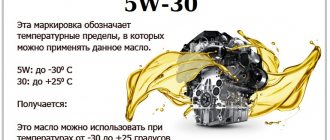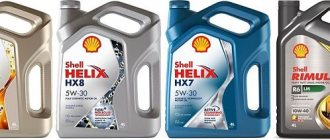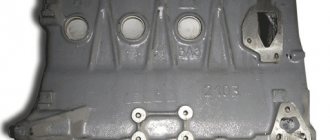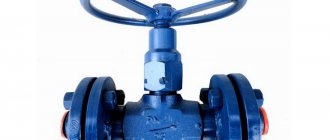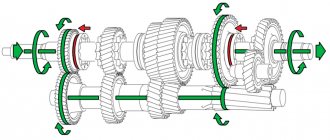Comparison table of motor oils
| Brand | Price per liter (RUB) | API class | ACEA class | Standards | Flash point | Pour point | Rating |
| General Motors Dexos2 Longlife 5W30 | 296 | SM/SL/CF; | A3, B3, B4, C3; | Euro-4 Euro-5 | 230°C | -38°C | 5.0 |
| Elf Evolution Full-Tech FE 5W30 | 559 | Not specified | C4/C4 | Euro-4 Euro-5 | 240°C | -43°С | 5.0 |
| Motul Specific dexos2 5W30 | 862 | SM/CF | C3 | Euro-4 Euro-5 | 232°C | -36°C | 5.0 |
| Zic X7 LS 5W-30 | 374 | SN/CF | C3 | Euro 6 and below | 230°C | -42.5°C | 5.0 |
| Total Quartz INEO ECS 5W30 | 480 | Not specified | C2 | Euro 6 and below | 234°C | -36°C | 4.9 |
| G-Energy F Synth EC 5W-30 | 472 | Not specified | A5/B5; A1/B1 | Euro-4 Euro-5 | 228°C | -39°C | 4.9 |
| Castrol EDGE Professional OE 5W-30 | 728 | SN/CF | C3 | Euro 6 and below | 204°C | -42°C | 4.9 |
| Motul 8100 X-clean FE 5W30 | 876 | SN | C2/C3 | Euro-4 Euro-5 | 226°C | -33°C | 4.8 |
| Idemitsu Zepro Touring 5W-30 | 730 | SN | Not specified | Euro-4 Euro-5 | 230°C | -42.5°C | 4.8 |
| Liqui MOLY Top Tec 4200 | 959 | CF | B4/B5/C2; | Not specified | 235°C | -42°C | 4.7 |
Many car enthusiasts, wanting to save money, fill the engine with mineral oil, thereby reducing the replacement interval. But even with frequent replacement of auto lubricant, mineral water does not provide adequate engine protection. Under conditions of severe loads, it begins to very quickly lose its properties, which significantly reduces the service life of the vehicle. Therefore, make your choice in favor of high-quality synthetic products.
Explanation and operating conditions of the 5W20 brand
Manufacturers use additives in automotive oils to improve the oil's performance when it comes to lubrication. Additionally, some other effects of additives in oils include cleaning engine deposits from engine parts, preventing corrosion or rust inside the engine, and preventing oil breakdown due to oxidation or extreme temperatures.
When we start our car on a cold winter day, we want the oil to be thin so it can instantly lubricate the internal parts.
Decoding 5W20 according to the SAE standard:
- The first number, 5, represents the oil's cold weather viscosity rating at 0ºC, where the letter "W" stands for Winter. Motor oil thickens when it cools and thins when it warms up. The lower the first number, the more resistant the oil is to thickening at low temperatures.
- 20 is the film thickness when starting the engine. On the other hand, the higher the second number, the more resistant the oil is to operating at high temperatures.
In production, a balance must be struck between the two, as oil that is too thick can cause fuel economy problems by requiring the fuel pump to work harder. Oil that is too thin will not be stable enough to provide sufficient lubrication between the moving parts of the engine.
Temperature Range
-35 ºC to +20 ºC
5W20 oil can be used all year round, in any season.
Differences between 5W-30 and 5W-20
They differ from each other primarily in that 5W-20 is less viscous (or thick). Thanks to this, it creates less friction during engine operation and reduces the load on the crankshaft, valves and pistons. As a result, fuel consumption may decrease slightly.
The reduced viscosity of 5W-20 oil simplifies the operation of the oil pump, which pumps it from the oil sump to the engine components. This is why 5W-20 is preferable for cold climates - it makes starting much easier. 5W-30 is used in hot climates, since liquid oil tends to decompose when exposed to high temperatures. The viscosity of 5W-30 is higher than 5W-20, and it will provide better protection for engine parts in this situation.
What oil should I use?
When choosing oil for your car, do not forget about the following. The 5W-30 and 5W-20 grades actually provide almost the same engine protection, but they differ slightly in terms of viscosity. 5W-30 is a thicker oil and should be preferred if the car will operate at elevated ambient temperatures, while 5W-20 will provide reliable engine protection in cooler weather and will help save fuel to some extent.
Operational flexibility in this case means that 5W-30 and 5W-20 oils work equally well regardless of the weather and time of year.
Synthetic or semi-synthetic
Synthetic oil is artificially created. It is made from oil with the addition of other substances that impart certain qualities to the future lubricant by mixing using a special technology. Advantages of synthetic oil:
- Resistance to temperature changes
- Significantly increases the life of the engine, with the right choice
- Performs better under load conditions (idling, starting and warming up)
- Resistant to temperature changes
- Economical. Synthetic oil is used more slowly because it penetrates into the smallest gaps.
The disadvantage of synthetic oil is its high cost.
Semi-synthetic oil is made from additives and refined petroleum, the cost of which is lower, and therefore the final cost of the oil is lower. Advantages and disadvantages of semi-synthetic lubricant:
- Creates normal engine operating conditions
- Protects against wear
- Has good penetrating ability
- Low volatility
- High technical performance
- Affordable price - on average it costs 1.5 times cheaper than synthetic
Semi-synthetics are usually used as a compromise option. It is less efficient, has higher consumption, and is more sensitive to conditions.
Synthetic and semi-synthetic lubricating fluids have different degrees of viscosity, and therefore different effects on the engine. The choice of lubricant type also depends on the vehicle’s mileage.
For cars with significant mileage, it is better to use thicker synthetic oil. Due to its viscosity, it fills larger gaps and will allow you to operate the engine longer.
Changing engine oil in Ford Focus 2
For a new car, a thinner oil that will penetrate into the smallest gaps is better. When properly matched to the technical characteristics of a car, both synthetics and semi-synthetics can ensure correct engine operation.
Lubricants for 5W20 motor - meaning and temperature range
When I first encountered 5W20 oil, I realized that I was not dealing with an ordinary product, but with a substance suitable for a special environment of use. It was recommended to me by a friend who works at a service station. He said that he had already bought it and poured it into the car. Manufacturers promised buyers serious fuel savings and also guaranteed engine cleanliness. This actually turned out to be the case.
I later found out that many people pour 5W20 lubricant into the engine, only because there is no more suitable option. 5W20 motor oil from any manufacturer will be of high quality. Each company tries to improve lubrication and for this purpose uses special additives, additives, and cleans the oil base in certain ways.
As a result, the finished product can be safely poured into a car engine and watch how the car begins to work better. In my review, I will talk about what chemical composition the product has, how the markings are interpreted, and what cars the lubricant is intended for.
Oil 5w20
The interpretation of the value 5w20 indicates that the oil is designed to operate in the following range: cold engine starts are carried out at a temperature of minus 30 degrees Celsius, and the positive temperature limit is indicated by +20C. This means that the viscosity coefficient of the product is quite low, which reduces friction in the components of the power unit. In such conditions, the motor can operate with maximum possible power. The only negative is the rupture of the oil film on the surfaces of parts due to prolonged downtime in traffic jams.
The last digit of the SAE marking also indicates the thickness of the film that forms on the working surfaces to protect parts from the effects of dry friction.
Marking in the form of the letter w indicates that the product is suitable for winter use. Thus, 5w20 engine oil is classified as an all-season lubricant.
Modifications of lubricants marked 5w20 are produced for gasoline and diesel units, suitable for both older models and new products in the automotive industry.
Benefits of 5w20:
- motor protection at a high level;
- efficiency when working with any type of units (diesel and gasoline);
- maintaining its qualities at idle;
- Due to the unique composition, the product does not evaporate.
When using 5w20 engine oil, fuel savings are observed.
General requirements for lubricants
Any mechanism that moves needs lubrication. This is necessary to protect parts from dry friction, which results in wear and defects on metal surfaces. Correctly selected lubricant increases service life. The use of incorrectly selected oil can lead to failure of engine parts and the need for major repairs.
The main tasks of motor oil:
- reduction of wear of engine parts;
- resistance to corrosion, aging and other negative factors;
- neutralization of soot and removal of sludge;
- maintaining thermal stability.
In addition, the product must be highly volatile and not foam too much. Any oil must retain its characteristic properties at the specified temperature, which is indicated by special markings.
Features of choice
First of all, try not to run into a fake; choose reliable dealerships and auto shops.
Requirements
When choosing, always consider the recommendations of your vehicle manufacturer. The passport of the iron horse clearly states the permissible parameters of the required oil - viscosity, type, standard.
We compare the viscosity of 10w-30 with 5w-30, 5w-40, 10w-40 and find out the differences based on testing
Worn out
The choice also depends on the wear of the engine. The more mileage the vehicle has, the higher the high-temperature viscosity of the engine oil.
Quality class
There are two main types of classifications.
- American API classification
This parameter is indicated by the designations SM, SN, CJ, CF.
The first letter indicates the engine type:
- S – petrol;
- C – diesel.
The second letter is the level of performance properties, the further the letter is from the initial A, the better.
- European ACEA classification
Just like in the American system, the first letter indicates the engine type:
- A – gasoline;
- B – diesel;
- C – modern standards for Euro-4 and higher;
- E – heavy transport.
The numbers indicate different engine loads and replacement intervals.
There are also Japanese ILSAC classification and Russian GOST, but such systems are rarely used.
Replacement intervals
When changing the oil, many people rely on the vehicle's mileage, but this data is not entirely correct. The operation of a vehicle in city traffic is very different from driving on the highway.
Mobil 1 esp 5w-30 oil review
It is more effective to change the fluid depending on operating conditions:
- in weekend mode, you can focus on mileage - 12,000-15,000 km;
- dacha operation requires an annual oil change;
- Daily driving through metropolitan traffic jams is the most deadly for the engine; in such conditions it is necessary to reduce the actual specified mileage interval by 1.5-2 times.
Competition brings quality
It is important to understand that it is difficult to create a motor oil that is perfect for all conditions, since usually one oil characteristic affects another performance property. Finding an operational balance is a dilemma for all synthetic oil producers in the world.
Here are several brands that specialize in the production and sale of oils labeled 5W20.
- AMSOIL. Many consumers agree that the synthetic oils supplied by AMSOIL are as good as they come. The effectiveness of this brand is confirmed by independent tests in studying the properties of oil in protecting your engine from wear. Anti-wear additives provide 75% more engine protection than other leading brands. This results in excellent fuel economy, longer oil drain intervals and stable viscosity at extreme temperatures. AMSOIL achieved fame in 1972 with the release of the first synthetic motor oil to meet the strict requirements of the American Petroleum Institute (a national non-governmental organization of the United States).
- Pennzoil Ultra Platinum. A fully synthetic oil that is known among car enthusiasts for its amazing lubricating and cleaning properties. It's all thanks to patented PurePlus technology, which converts pure natural gas into fully synthetic motor oil. The Pennzoil process results in a base oil that is 99.5% pure in the industry. Test results show that the pistons will be 25% cleaner than when using other types of oils: this provides fuel savings, minimal engine energy losses and the highest friction protection.
- Mobil 1. This brand dates back over a hundred years and is one of the most popular and trusted brands in the automotive industry. In fact, it is the world's leading synthetic motor oil company and is used by most car manufacturers, including the likes of Porsche and Mercedes. Mobil 1 Extended Performance, specifically designed to extend oil change intervals. These characteristics are ensured by integrated SuperSyn technology, which maintains the oil's anti-wear properties at the highest level at extremely low and high temperatures. It is a sports cocktail of supplements that offers exceptional thermal and oxidative stability.
- Royal Purple. This manufacturer's high-quality synthetic motor oil is the best choice for vehicles with high performance requirements. Royal Purple have grown to become one of the most trusted brands when it comes to servicing high-performance vehicles. Many synthetic oils struggle to maintain a working formula when engine speeds, temperatures and loads increase under pressure. But still, such work leads to a decrease in fuel economy and deterioration in engine performance. This dilemma made manufacturers think and the creators of Royal Purple found a solution. It's all about a special additive - Synerlec, which works at the molecular level, creating high-strength ionic bonds with the metal surfaces of the engine. The oil reacts with increased viscosity, strength and lubricity, keeping your engine performing at its best, even under extreme production conditions.
- Castrol. Castrol fully synthetic motor oil has proven itself in high engine temperatures. As with Royal Purple, Castrol products perform well under heavy engine loads. Titanium additive technology provides molecular changes to the oil that maintain its structure under high-performance conditions. Simply put, high friction and heat will not cause this motor oil to lose performance. Tests have also shown a reduction in engine deposits by up to 40% compared to other synthetic oils.
- Shell. Positioned as a lubricant for severe operating conditions. The brand is considered a favorite among motorcyclists as it has exceptional performance in low and high temperatures. At the same time, Shell engineers specifically indicate that the use of their oil will increase fuel economy by 1.5% compared to similar brands. Shell also includes a variety of additives in its oils to achieve the claimed performance improvements. The production technology uses modern multifunctional dispersing additives that provide protection against dirt, soot, debris and other contaminants.
Motor oil SAE 5W-20
5W-20 all-season motor oil, designed for the specific requirements of engines designed for energy-saving oils. Due to its easy pumpability and low viscosity, it not only reduces mechanical losses on the oil pump drive, but also ensures normal operation of the engine, which requires low-viscosity lubricant.
In an effort to maximize efficiency, designers of such engines are forced, among other things, to reduce the elasticity of the piston rings. It is the friction between them and the cylinder walls that creates a considerable part of the mechanical losses.
But with a decrease in the thickness and elasticity of the rings, their effectiveness is inevitably lost, so the use of conventional oils like 5W-40 in such engines already leads to a noticeable increase in oil consumption due to waste. Easy-flowing 5W-20 oils, in turn, at engine operating temperature have a minimum kinematic viscosity, guaranteeing normal operation of the engine oil scraper rings.
The increased content of friction modifiers has a positive effect on mechanical losses in all lubricated components - from main bearings to camshaft beds.
What does the 5W-20 marking mean: characteristics
One of the main indicators of the applicability of motor oil is its viscosity, and for all-season motor oils, both viscosity at engine operating temperature and at subzero temperatures is important.
Therefore, the SAE J300 standard introduces a number of formal requirements corresponding to a set of viscosity grades to ensure ease of labeling and comparison of lubricants. An increase in the numerical viscosity index means an increase in it during tests required for the specified class.
In this system, summer SAE 40 oil is thicker than SAE 30, and all-season SAE 5W-30 (with comparable winter performance) is thicker than SAE 5W-20 at engine operating temperature.
The characteristics of the oil under cold start conditions are indicated by the low-temperature viscosity class. In order to be able to distinguish summer oils from winter ones, it is designated with an additional letter W. That is, 5W-20 engine oil in its starting characteristics must exceed the maximum requirements of the 5W class.
- During cranking tests, dynamic viscosity is measured at a temperature of −30 °C and should not exceed 6600 mPa s. This is considered the threshold below which the average engine cannot be reliably cranked by the starter. Accordingly, oils with a 5W class are recommended for climates where the temperature does not fall below the specified one.
- With a difference of 5 degrees (at a temperature of -35 °C), the viscosity should not exceed 60,000 mPa s. This threshold is common to all SAE classes; only the testing temperature changes. The test confirms the ability of the oil pump to pump the lubrication system.
Test results for ROLF JP SAE 5W-20 ILSAC GF-5/API SN oil demonstrate excellent dynamic viscosity margin relative to the standard requirements. Therefore, it can be confidently used in most regions of Russia, with the exception of the coldest ones, where the optimal choice is oils with low-temperature viscosity class SAE 0W.
During high temperature testing, SAE 5W-20 oil must fall within the following limits:
- by kinematic viscosity at 100 °C – from 5.6 to 9.3 mm2/s;
- by dynamic viscosity (HTHS) at 150 °C – not less than 2.6 mPa s
These limits are the smallest of all those provided for by the standard. Therefore, high shear stability and viscosity stability during the drain interval are most important for 5W-20 oil. One of the signs of oil quality that allows you to count on a good service life is the proximity of the measured kinematic viscosity to the upper limit of the standard, as demonstrated by ROLF JP SAE 5W-20 ILSAC GF-5/API SN oil.
| Viscosity grade | 5W-20 |
| API oil classification | SN, ILSAC GF-5 |
| Density at 15 °C, kg/m3 | 849 |
| Kinematic viscosity at 100 °C, mm2/s | 8,8 |
| Kinematic viscosity at 40 °C, mm2/s | 49,7 |
| Viscosity index | 157 |
| Dynamic viscosity of CCS at minus 35 °C, mPa s | 4600 |
| Base number, mg KOH/g | 6,7 |
| Volatility according to NOACK, % | 9,3 |
| Flash point in an open crucible, °C | 235 |
| Pour point, °C | -40 |
When is it better to use 5W-20 oil?
It is necessary to clearly understand that lubricants of this class are intended for a specific and rather specific class of engines. Fuel savings in them are achieved to a large extent by design solutions that already determine the tolerances of recommended oils.
